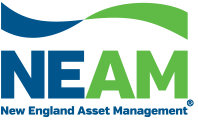Back in the early 2000’s we began speaking with our insurance company clients about the potential benefits of membership in the Federal Home Loan Bank System. We immediately identified this program as a relatively inexpensive source of liquidity which could be particularly useful at times of capital market volatility when execution costs would be abnormally high. In addition, the low cost (collateralized) borrowing could provide opportunities to augment investment income for those insurance company clients who were interested in utilizing modest leverage to potentially improve investment income and ROE.
While we have assisted many of our clients in joining the FHLB, the topic of membership has recently come back into focus as insurance companies evaluate all options in this persistent low yield environment. Just as we did 10 to 15 years ago, we continue to believe membership is deserving of consideration for several reasons.
Insurance companies in the U.S. have used the FHLB program as a means to enhance liquidity and potentially boost investment portfolio yields for some time. Despite the increase in insurance company memberships over the past decade, use of the program throughout the industry remains low. Notwithstanding recent sell offs in bond markets, interest rates and yields remain low on a historical basis, with predictable implications for insurance companies’ investment portfolios. The use of the FHLB program is as a way for insurance companies to gain access to a low cost alternative liquidity source with the ability to potentially enhance portfolio yields.
FHLB Program and Insurance Company Membership
The FHLB program consists of 11 member banks1 that are government sponsored enterprises organized under the Federal Home Loan Bank Act of 1932. Working as cooperatives, the FHLB banks aim to source and subsequently provide reliable, low cost funds to member institutions with the intention that such funds are then used to promote investment in real estate and community development. As of Q3 2016, the combined entity had approximately $1 trillion in assets, with the majority of those assets being the $689 billion “advances” made to its member institutions (66% of the combined FHLB entity’s asset base). FHLB banks fund themselves through debt issued on a joint and several basis into the capital markets through the Office of Finance.
The list of FHLB member types is wide ranging but their common thread is their commitment to housing finance. Members include NCUA and FDIC insured institutions, community development financial institutions, and insurance companies. While not insured depository institutions, insurance companies meet the hurdle for membership due to their mortgage related assets and “commitment to housing finance.”2 As of December 31st, 2015, insurance companies numbered 372, or approximately 5% of total membership. This number has grown over the years, having more than tripled since 2005 (111 members).

In terms of advances made to the sector by the FHLB banks, their representation is greater, totaling approximately 16% of total advances for the same time period.3 Life insurance companies dominate the use of the FHLB by volume, holding approximately 90% of the FHLB stock across the industry as of year-end 2015, while within each sector (Life, P&C, and Health), use of the program is concentrated among a smaller subset of players.

Although insurance company use of FHLB funding has been on the rise more recently, the use of such advances remain a small percentage of insurance company liabilities overall. To illustrate this point, data from the Federal Reserve’s Flow of Funds shows that as of Q3 2016, total insurance company FHLB advances as a percent of total insurance company liabilities equaled just under 2% for life insurance companies4 and 0.33% for P&C companies.
Potential Insurance Company Uses
Insurance companies with real estate holdings can use the FHLB to their advantage in a variety of ways, stretching from enhanced liquidity to potentially improving investment portfolio yields. Funds from the FHLB can be considered a low cost, alternative set of funds, offering both funding diversification and liquidity benefits. Additionally, insurance companies can use FHLB funds to potentially boost investment portfolio yields, which may be more applicable in this prolonged period of unconventional monetary policy, considering its gravitational impact on interest rates and credit spreads. To illustrate this point, we choose a hypothetical investment in a selection of 3-month Libor based floating rate bonds, with a net spread (after funding) of 0.70%, where the use of funds from the FHLB program could potentially yield an approximate 11% return on the activity and membership stock required to invest to secure the advance.

The magnitude of the return would depend in part on the composition of newly purchased assets and the net spread achieved after accounting for funding costs. The impact on the total invested portfolio’s return would also depend on the size of the program relative to the company’s total invested assets and composition of newly purchased invested assets. While the return here is hypothetical, it highlights that the use of secured advances5 from the FHLB to potentially earn additional income or optimize cash levels on the balance sheet could be attractive. It should be noted however that investment yields and funding rates are not stagnant, and therefore do not always lend themselves to such returns.6 In this respect, other than the amount of money put into membership stock (on which one receives a dividend), funding is available when needed, and interest is only paid on advances when drawn. This allows participants to be flexible in the timing of their use of the program.
The FHLB system has been in place for more than 80 years, with usage by insurance companies growing over the past decade. During such time, NEAM has discussed the use of the FHLB program to its insurance company clients and continues to recognize its value. The advances provide a combination of low cost, alternative funding for use as additional liquidity along with the ability to potentially enhance investment portfolio yields, which is particularly pertinent in today’s persistent low rate environment.
- FHLB program has been in existence for some time, with insurance company usage increasing over the last 15 years.
- Despite the increase in insurance company memberships, adoption of the program across the industry, in particular non-life insurance companies, remains low.
- Insurance companies in the U.S. have used the FHLB program as a potential means to enhance liquidity and boost investment portfolio yields.
- NEAM recognizes that the FHLB program has the ability to offer insurance companies a combination of low cost, alternative funding for use as additional liquidity along with the ability to potentially enhance investment portfolio yields, which is particularly pertinent in today’s rising, albeit still low rate environment.
Endnotes
1 As of year-end 2016, the 11 FHLB Banks are Atlanta, Boston, Chicago, Cincinnati, Dallas, Des Moines, Indianapolis, New York, Pittsburgh, San Francisco and Topeka.
2 12 CFR 1263 NPR.
3 Advances to insurance companies are not uniform across the banks, with the FHLB Indianapolis, Chicago and Des Moines counting more than 30% of their advances to such parties, and others much less.
4 Total General Account liabilities for life insurance companies
5 Advance rates are impacted by factors such as the financial health of the company applying for funds, the type of security interest granted and collateral pledged.
6 While not a comprehensive list, the return on the investment could be impacted by such factors as the investable asset’s yield, the tenor and structure of funding and the level and type of funding rate. Activity based capital requirements and dividend rates at time of investment would also apply. Furthermore, depending on the size of the program undertaken, participants should note that while the program has the potential capacity to boost a company’s overall return on equity, the addition of assets without additional capital can impact the company’s overall financial profile.









